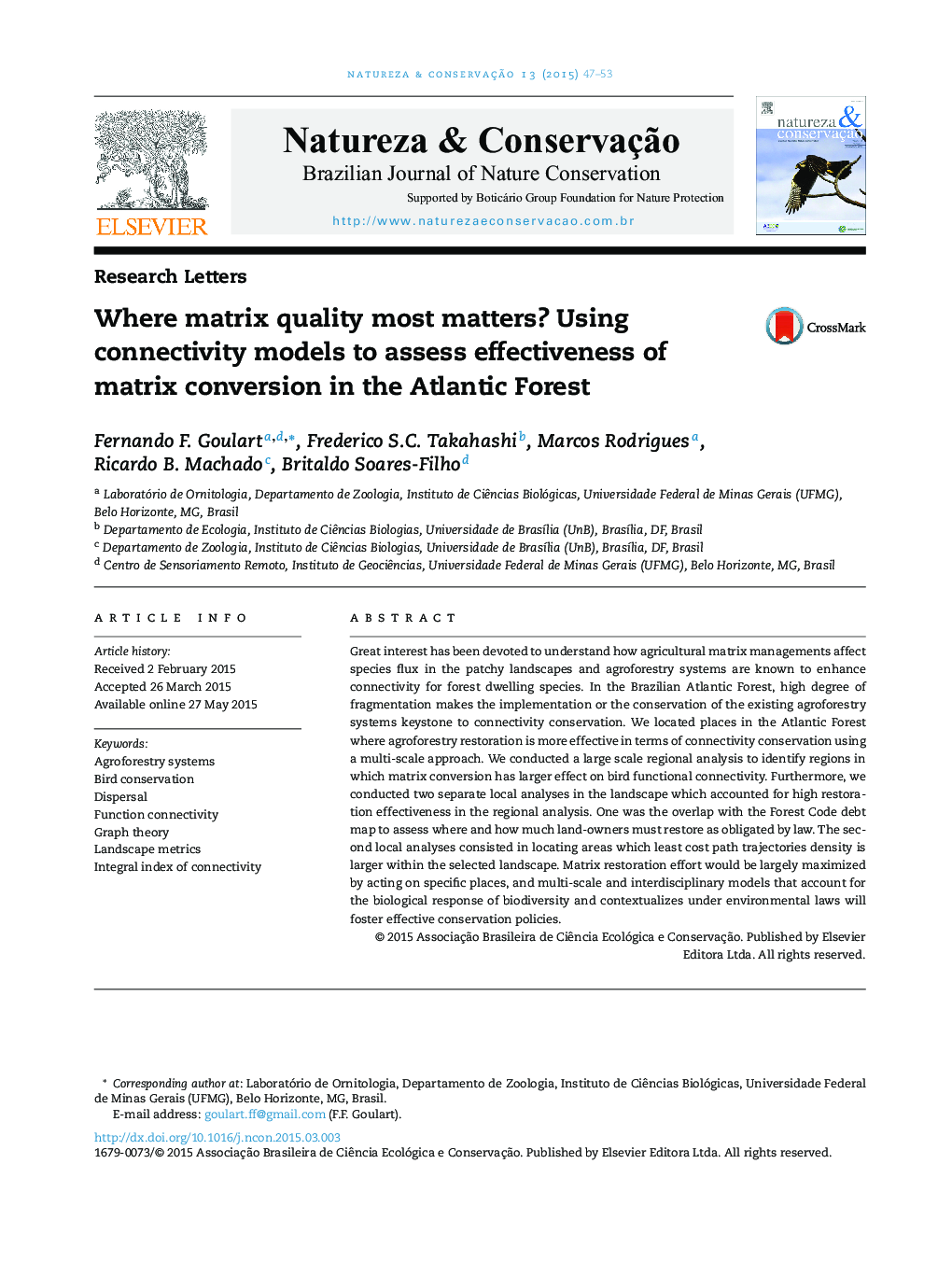| Article ID | Journal | Published Year | Pages | File Type |
|---|---|---|---|---|
| 4400828 | Natureza & Conservação | 2015 | 7 Pages |
Great interest has been devoted to understand how agricultural matrix managements affect species flux in the patchy landscapes and agroforestry systems are known to enhance connectivity for forest dwelling species. In the Brazilian Atlantic Forest, high degree of fragmentation makes the implementation or the conservation of the existing agroforestry systems keystone to connectivity conservation. We located places in the Atlantic Forest where agroforestry restoration is more effective in terms of connectivity conservation using a multi-scale approach. We conducted a large scale regional analysis to identify regions in which matrix conversion has larger effect on bird functional connectivity. Furthermore, we conducted two separate local analyses in the landscape which accounted for high restoration effectiveness in the regional analysis. One was the overlap with the Forest Code debt map to assess where and how much land-owners must restore as obligated by law. The second local analyses consisted in locating areas which least cost path trajectories density is larger within the selected landscape. Matrix restoration effort would be largely maximized by acting on specific places, and multi-scale and interdisciplinary models that account for the biological response of biodiversity and contextualizes under environmental laws will foster effective conservation policies.
